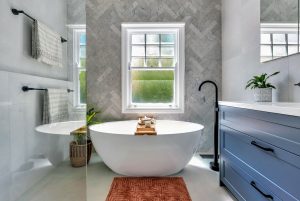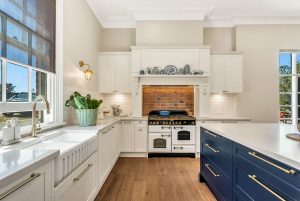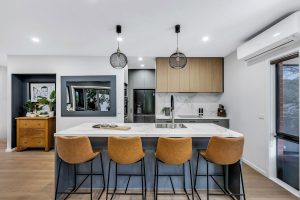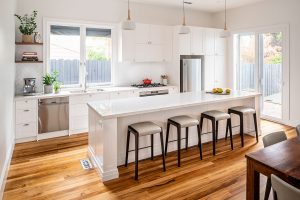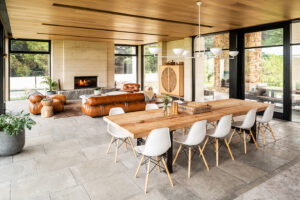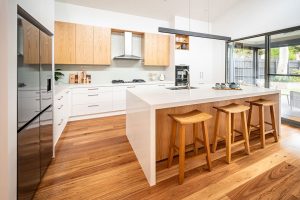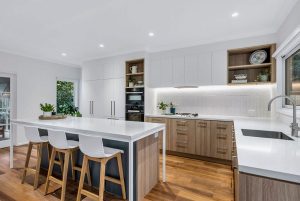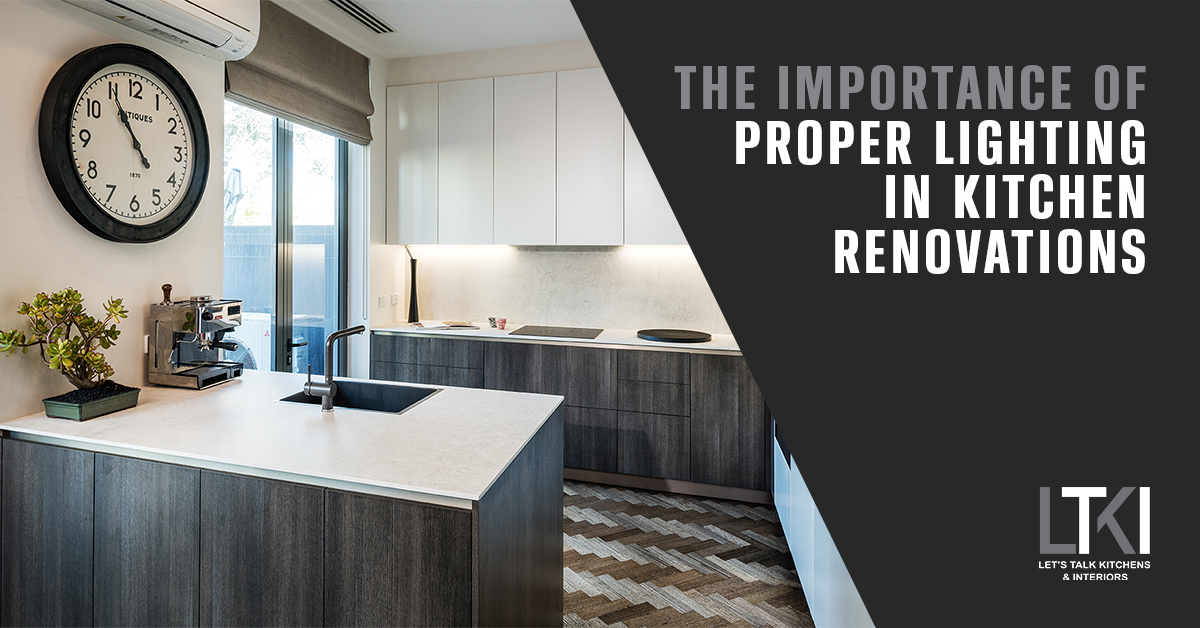
The Importance Of Proper Lighting In Kitchen Renovations
The kitchen is often considered the epicentre of the home, a place where families and friends gather to prepare meals, share stories, and create memories. As such, it is essential to have proper lighting in your kitchen renovation to make it functional, safe, and comfortable. Adequate lighting can enhance the ambience, mood, and style of your kitchen, making it a warm and welcoming space.
In today’s article, will explore the various aspects of lighting in kitchen renovation, including its importance, types of lighting, design considerations, and tips for choosing the right lighting for your kitchen.
Understanding Kitchen Lighting
A lighter and brighter kitchen is essential for both practical and aesthetic reasons. This can be achieved with the help of proper lighting. Understanding the types of lighting available, how to place them, and what light temperatures to use can help you achieve the best lighting possible.
Types of Lighting
There are three main types of lighting that are typically used in kitchens: ambient lighting, task lighting, and accent lighting.
- Ambient lighting provides general illumination and sets the mood for the room. It can be achieved through ceiling-mounted fixtures or wall sconces.
- Task lighting is focused lighting that illuminates specific work areas. Under-cabinet lighting, pendant lights, and track lighting are popular options for task lighting in the kitchen.
- Accent lighting is used to highlight particular features or decor in the kitchen, such as art or architectural details. It can be achieved through the use of spotlights or directional lighting.
Lighting Placement
The placement of your lighting fixtures is key to achieving optimal lighting in your kitchen. Task lighting should be placed in areas where you’ll be working, such as over the stove or sink. Ambient lighting should be evenly distributed throughout the room, and accent lighting should be used to highlight specific areas or features.
Understanding Light Temperatures
Light temperatures are measured in Kelvins, with lower Kelvins being warmer and higher Kelvins being cooler. Warm lighting, such as 2700K, can create a cosy, welcoming feel, while cool lighting, such as 5000K, can make the space feel bright and energetic. When choosing light temperatures for your kitchen, consider the mood you want to create and the tasks you’ll be performing in the space.
Benefits of Proper Lighting
Proper lighting is an essential aspect of any kitchen renovation. It offers several benefits that can make your space more functional, safer, and energy-efficient. Here are a few benefits to consider:
- Enhances the ambience of the kitchen: The right lighting can completely transform the look and feel of your kitchen. It can create a warm and inviting atmosphere, making the space more comfortable for cooking and entertaining.
- Improves functionality and safety: Adequate lighting is crucial for working in the kitchen safely and efficiently. Task lighting, for example, can make it easier to chop vegetables or read recipes, while under-cabinet lighting can provide better visibility for food preparation.
- Increases energy efficiency and cost savings: Proper lighting can also help reduce energy consumption and costs. Switching to LED bulbs, for instance, can significantly lower your energy bill while providing long-lasting, high-quality lighting.
Types Of Lighting To Consider
Lighting is an essential element of any kitchen renovation project, and choosing the right type of lighting can make a significant difference in the overall functionality and atmosphere of the space. Here are the three main types of lighting to consider:
- General lighting: Also known as ambient lighting, general lighting is the primary source of illumination in the kitchen. It provides a uniform level of light throughout the space, making it easier to navigate and work in. Examples of general lighting fixtures include ceiling-mounted lights, chandeliers, and pendant lights.
- Task lighting: As the name suggests, task lighting is designed to illuminate specific work areas, such as countertops, stove, and sink. It helps to reduce eye strain and shadows while performing tasks such as chopping vegetables or washing dishes. Under-cabinet lighting, recessed lights, and track lighting are popular choices for task lighting.
- Accent lighting: Accent lighting is used to highlight specific features or areas of the kitchen, such as artwork, architectural details, or decorative elements. It can create a focal point and add depth and dimension to the space. Examples of accent lighting include wall sconces, picture lights, and LED strip lights.
When planning your kitchen lighting, it’s important to consider a combination of these three types of lighting to create a well-balanced and functional space.
Tips For Maximising Lighting In Your Kitchen
Lighting is an important aspect of any kitchen renovation, and it can greatly impact the look and functionality of the space. Here are some tips for maximising lighting in your kitchen:
- Use a layered lighting approach: A layered lighting approach involves using a combination of different types of lighting to achieve the desired effect. For example, a combination of general, task, and accent lighting can provide ample illumination for various kitchen activities while creating a warm and inviting ambience.
- Install dimmer switches: Installing dimmer switches allows you to adjust the brightness of your lighting, which can be particularly useful for setting the mood during meals or for reducing glare on screens. It also helps save energy and extend the life of your bulbs.
- Choose the right fixtures and bulbs: Selecting the right fixtures and bulbs can make a big difference in the overall look and feel of your kitchen. LED bulbs are a popular choice for their energy efficiency and long life. Pendant lights and chandeliers can add visual interest and provide task lighting while under-cabinet lighting is great for illuminating work surfaces.
- Consider natural light: Natural light can make a kitchen feel larger and more inviting. If your kitchen has windows, consider window treatments that can let in natural light while still providing privacy. In addition, you may want to consider a skylight or sun tunnel to bring in even more natural light.
Common Lighting Mistakes to Avoid
When it comes to kitchen lighting, there are some common mistakes that homeowners often make. By avoiding these mistakes, you can create a well-lit and functional kitchen that is both beautiful and efficient. Here are some common lighting mistakes to avoid:
Improper lighting placement
One of the biggest mistakes homeowners make when it comes to kitchen lighting is improper placement. This can result in shadows, glare, and other issues that can make it difficult to work in the kitchen. To avoid this, make sure that your lighting is placed in the right locations. For example, task lighting should be placed directly above work surfaces, while general lighting should be evenly distributed throughout the kitchen.
Insufficient lighting
Another common mistake is not having enough lighting in the kitchen. This can lead to a dark and gloomy space that is difficult to work in. To avoid this, make sure that you have enough lighting sources in your kitchen. Use a layered lighting approach, with a combination of general, task, and accent lighting. This will help ensure that your kitchen is well-lit and functional.
Poorly chosen light fixtures
Choosing the wrong light fixtures can also be a mistake. For example, fixtures that are too small may not provide enough light, while fixtures that are too large can overpower the space. Make sure to choose fixtures that are the right size for your kitchen, and that match the style of the space. You should also choose fixtures that are energy-efficient, to help reduce your energy costs.
By avoiding these common lighting mistakes, you can create a well-lit and functional kitchen that is both beautiful and efficient. With the right lighting, you can create a space that is perfect for cooking, entertaining, and spending time with your family.
Final Thoughts
Proper lighting is an essential aspect of any kitchen renovation. It not only enhances the ambience of the kitchen but also improves functionality and safety, and increases energy efficiency and cost savings. When it comes to lighting, it’s important to understand the different types of lighting and their placement in the kitchen. Homeowners should also be mindful of common mistakes, such as improper lighting placement, insufficient lighting, and poorly chosen light fixtures.
To maximise the lighting in your kitchen, consider a layered lighting approach, install dimmer switches, choose the right fixtures and bulbs, and take advantage of natural light. By avoiding common mistakes and following these tips, homeowners can create a well-lit, functional, and inviting space for cooking and entertaining.
Reach Out To Let’s Talk Kitchens & Interiors Today!
Looking to transform your kitchen into a bright and inviting space? Don’t overlook the importance of proper lighting! Contact us today to learn how our expert team at Let’s Talk Kitchens & Interiors can help you design a lighting scheme that complements your kitchen’s layout, style, and functionality. From LED under-cabinet lighting to statement pendant lights, we’ll help you choose the perfect fixtures to enhance your space and create a warm, welcoming atmosphere for cooking, dining, and entertaining.
If you would like further help designing your new kitchen call Let’s Talk Kitchens & Interiors today on (03) 9068 5496 to speak with one of our qualified Interior Designers or book a consultation.




